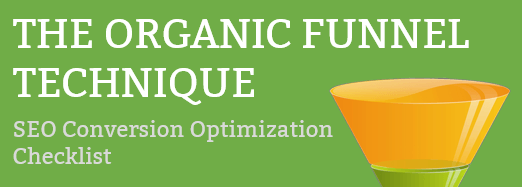
So if you haven’t ever heard of Google RankBrain, I don’t blame you, not a lot of people have. But if you are going to rank higher in Google search results, you MUST know how it works or your rankings will suffer.
Why does it matter? Because about 30% of your rankings (at the moment) are dependent on RankBrain.
So I recorded a short 3 minute video to explain how it works (no technical jargon or explanations) so that you can begin making changes to your content starting today.
3 Key Things to Focus on for Google RankBrain
So if you watched the video, you know have the basics of what you need to do. Focus on 3 things.
- Page Titles. Your page title is what appears as the link in Google Search results. Don’t make it spammy, but make it enticing, make it interesting, and make sure it hints at the problem the searcher is trying to solve.
- Meta Description. Your page meta description is what shows below the link in Google Search results. You can put more content here than the title. It also should be written to convince the searcher to click on your link, that you have the answer they need.
- Content Stickiness. This is the hard one. You have to keep people on your site. Your page title and meta description must match up with the content on the page. That page must capture the visitor’s attention really fast that you do truly have the answer and that it is worth their time to read further on that page or go to the next page to learn more. Your goal is to keep them engaged and not go anywhere else and you can dig deeper into what is good content on our last blog post.
Now, if you want to dig into a LOT more detail, Brian Dean has a great, in-depth, article on what you need to do. This will be super useful for you content marketers out there.
What is the Meta Description?
The META description is within the HTML <header> of each web page on your site. It looks like:
<meta name=”description” content=”Short description goes here” />
Like META Keywords, the description was originally one of the big influencing factors on search engines that defined what the site or page is about. This tag is no longer used in the algorithms to determine what the page is about. It was yet another feature that SEO companies would traditionally stuff with keywords or content in order to rank higher. Even though it no longer carries any weight, it is an extremely important tag. Google, Bing and other search engines now use the description in many cases as the description within the search engine results page (SERP). For instance, at the time this was written if you search on “shirts” at Google, the first result is for Threadless:
Threadless graphic t-shirt designs; cool & funny t-shirts weekly …
New graphic t-shirts released weekly. Awesome new designs submitted and rated by the Threadless community.
The description for Threadless below the link is what you find within their META Description tag on the page. Considering the fact that a large percentage of your visitors come from search engines, what you say here can mean the difference between having a visitor and not. It needs to be concise and highly relevant to the page they are visiting on your site. If what they see on the page they visit doesn’t correlate with what you have on the page, it will cause a higher bounce rate for that page and they will most likely never come back. Additionally, having a better META Description than your competitors that appear in the SERP will impact whether someone is interested in actually clicking on your link.
Meta Description Review
- Use the META Description on every page of your site.
- Keep it to less than 80 characters and no more than 150-170 characters long.
- Make sure the copy makes sense and is related to the page. We want to keep bounce rates down.
- Make it unique for each page on your site.

